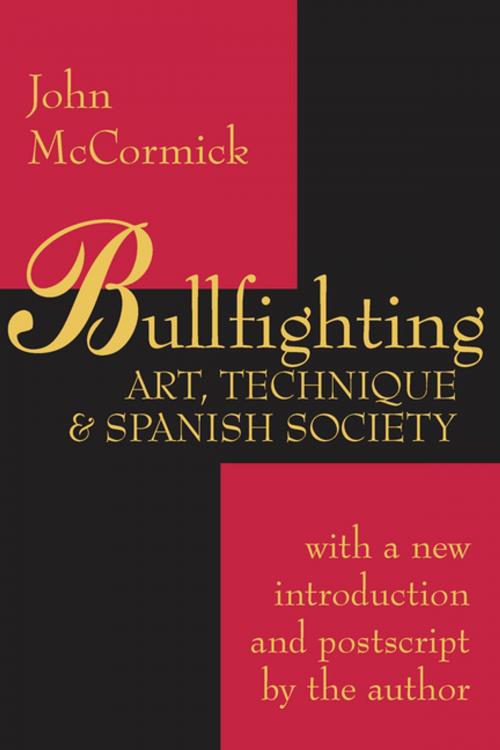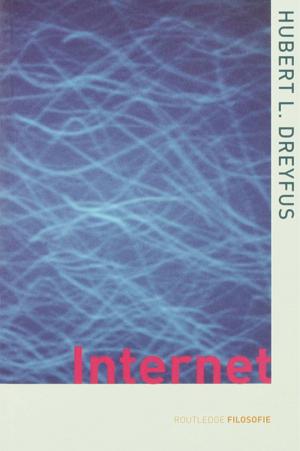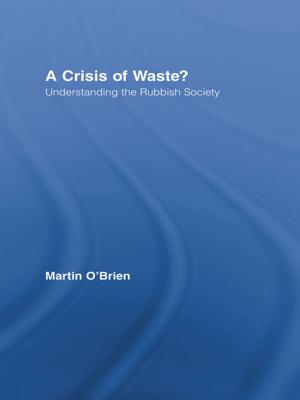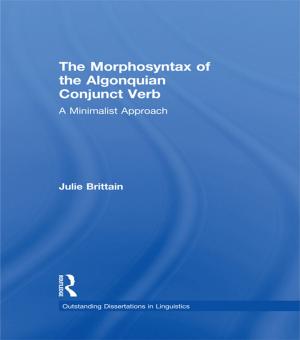Bullfighting
Art, Technique and Spanish Society
Nonfiction, Social & Cultural Studies, Social Science, Sociology, History| Author: | John McCormick | ISBN: | 9781351530439 |
| Publisher: | Taylor and Francis | Publication: | July 5, 2017 |
| Imprint: | Routledge | Language: | English |
| Author: | John McCormick |
| ISBN: | 9781351530439 |
| Publisher: | Taylor and Francis |
| Publication: | July 5, 2017 |
| Imprint: | Routledge |
| Language: | English |
Ernest Hemingway, best-known to layman and aficionado alike, in his fiction described bullfighting, or toreo, as a cross between romantic risk and a drunken party, or as an elaborate substitute for war, ending in wounds or death. Although his descriptions of the "beauty"in toreo are lyrical, they are short on imaginative creation of how such beauty, through techniques and discipline, comes about. Hemingway may have sculpted a personal mystique of toreo but, in the opinion of some, he ignored or slighted the full, unique nature of the subject.In Bullfighting: Art, Technique, and Spanish Society John McCormick sorts through the complexities of toreo, to suggest the aesthetic, social, and moral dimensions of an art that is geographically limited, but universal when seen in round. While having felt the attraction of Hemingway's approach, McCormick knew that he was being seduced by elements that had little to do with toreo. To try to right Hemingway's distortions, he named the first edition of this book The Complete Aficionado, but then realized that the volume was directed at more than just the spectator: BullFighting is written from the point of view of the torerro, as opposed to the usual spectator's impressions and enthusiasm. With the help of a retired matador de toros, Mario Sevilla Mascarenas, who taught McCormick the rudiments of toreo as well as the emotions and discipline essential to survival, the authors rescue 'toreo from romantic cliches. They probe the anatomy of the matador's training and technique, provide a past-and-present survey of the traditions of the corrida, and furnish dramatic portraits of such famous figures as Manolete, Joselito, Belmonte, and Ordonez.Here then is an informed analysis and critique of the origins and myths of toreo and a survey of the novels it has inspired. Defending the faith in a live
Ernest Hemingway, best-known to layman and aficionado alike, in his fiction described bullfighting, or toreo, as a cross between romantic risk and a drunken party, or as an elaborate substitute for war, ending in wounds or death. Although his descriptions of the "beauty"in toreo are lyrical, they are short on imaginative creation of how such beauty, through techniques and discipline, comes about. Hemingway may have sculpted a personal mystique of toreo but, in the opinion of some, he ignored or slighted the full, unique nature of the subject.In Bullfighting: Art, Technique, and Spanish Society John McCormick sorts through the complexities of toreo, to suggest the aesthetic, social, and moral dimensions of an art that is geographically limited, but universal when seen in round. While having felt the attraction of Hemingway's approach, McCormick knew that he was being seduced by elements that had little to do with toreo. To try to right Hemingway's distortions, he named the first edition of this book The Complete Aficionado, but then realized that the volume was directed at more than just the spectator: BullFighting is written from the point of view of the torerro, as opposed to the usual spectator's impressions and enthusiasm. With the help of a retired matador de toros, Mario Sevilla Mascarenas, who taught McCormick the rudiments of toreo as well as the emotions and discipline essential to survival, the authors rescue 'toreo from romantic cliches. They probe the anatomy of the matador's training and technique, provide a past-and-present survey of the traditions of the corrida, and furnish dramatic portraits of such famous figures as Manolete, Joselito, Belmonte, and Ordonez.Here then is an informed analysis and critique of the origins and myths of toreo and a survey of the novels it has inspired. Defending the faith in a live















